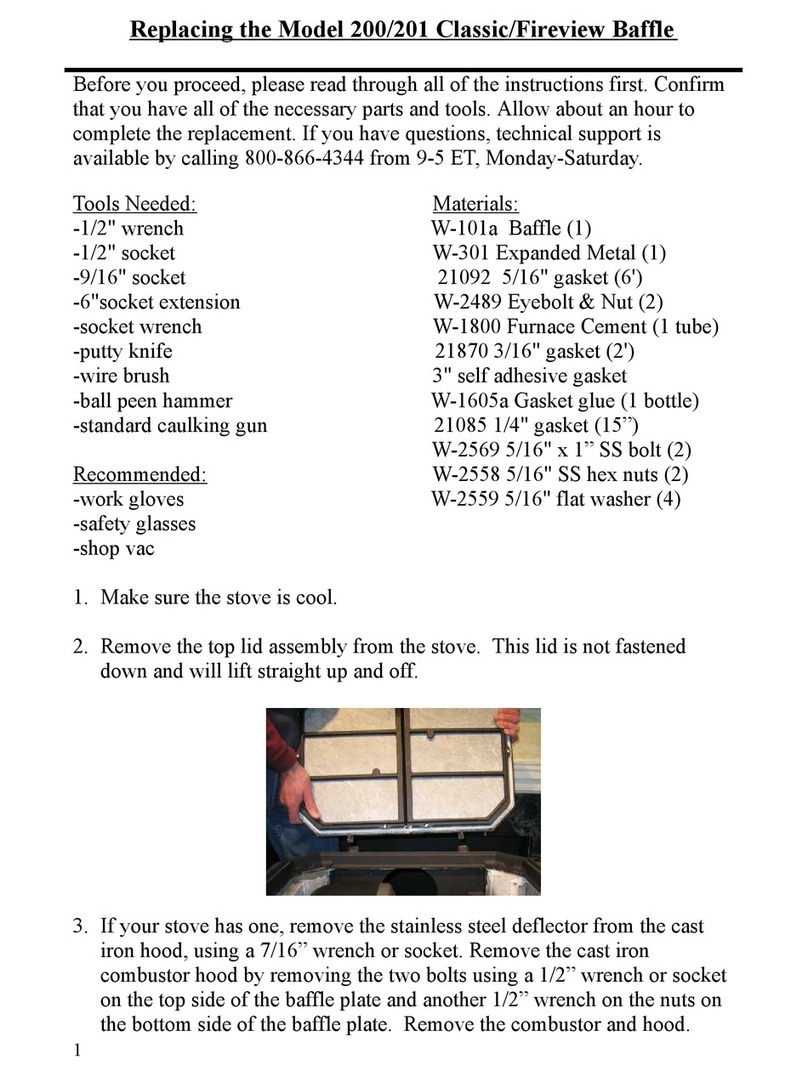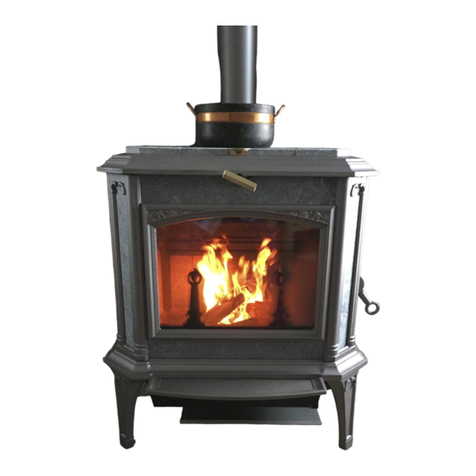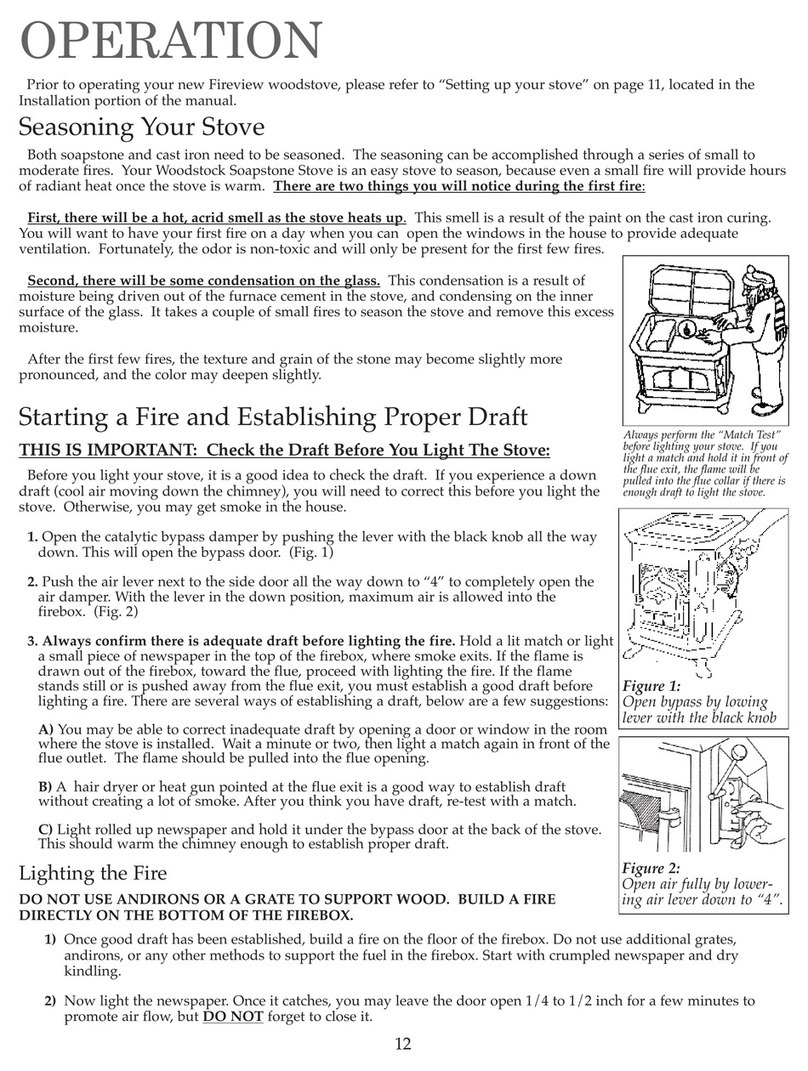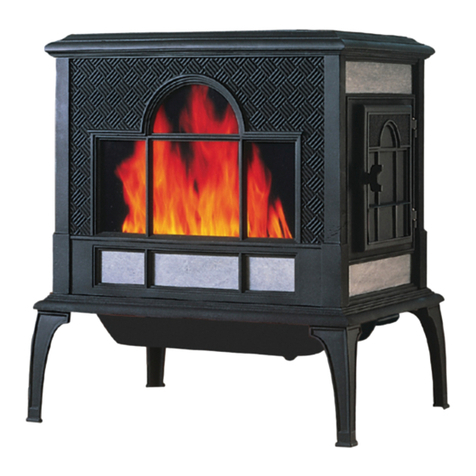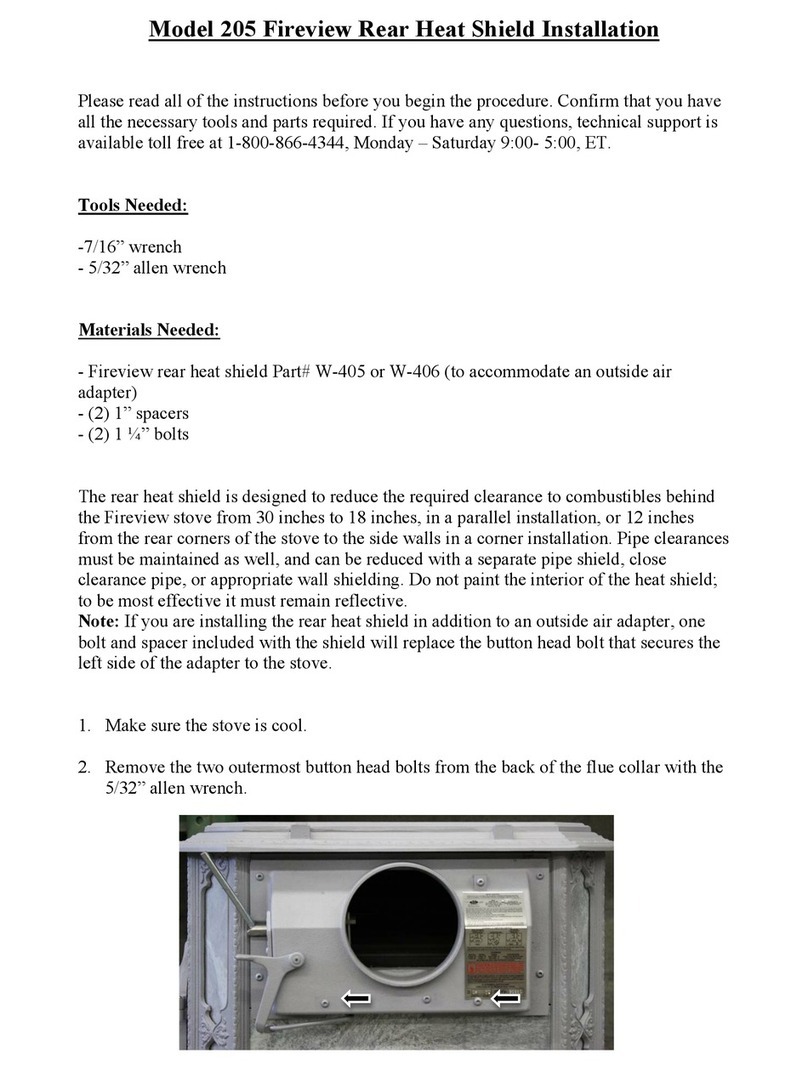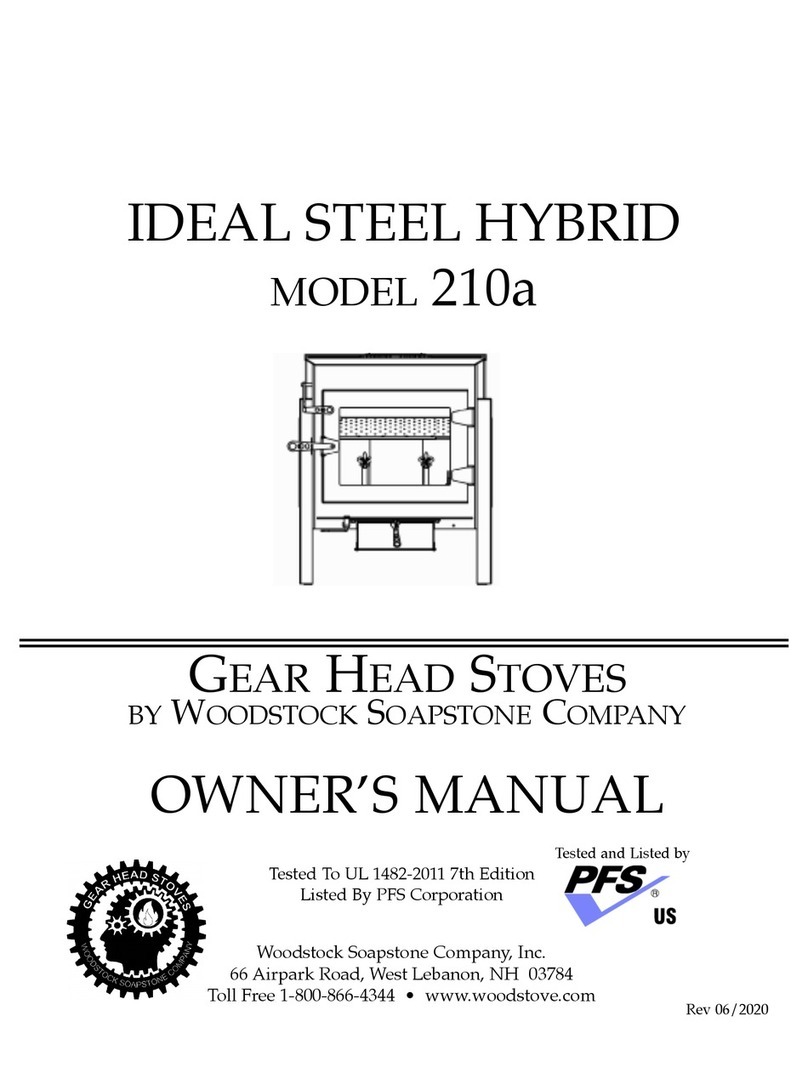
INSTALLATION
LOCATION
A centrally located stove will heat the greatest area of your home. Heat should be able to circu-
late easily into nearby rooms. Placing your stove near an open stairway or register in the floor
will help transfer heat to other rooms.
Other installation considerations are:
• Clearance to Combustibles
• Adequate Space for Wood Loading and Ash Removal
• Room Traffic Patterns
Most people install their stove in a room they use frequently so they can enjoy the beauty and
comfort of the stove. A prominent location also helps with monitoring and reloading the stove
as needed. A well planned placement will enhance your enjoyment of your stove and can also
save installation costs.
Th b st location for a chimn y and
woodstov is in th c nt r of th
hous . Th chimn y will b warm r,
draft will b b tt r, and radiant h at
will b distribut d mor v nly.
ALCOVE INSTALLATIONS
THE MODEL 212S SURVIVAL HYBRID WOODSTOVE IS NOT APPROVED FOR AN ALCOVE INSTALLATION. AN
ALCOVE IS DESCRIBED AS AN AREA LESS THAN 512 CUBIC FEET, WHICH IS E UIVALENT TO AN 8’ X 8’ X 8’
SPACE.
1
Woodstock Soapstone Co. has been designing, building, and
innovating wood and gas stoves since 1978. A properly
installed and operated Woodstock Soapstone Stove will
warm your home and delight your eye for a lifetime.
Read this entire manual carefully. t explains how to install
your Woodstock Soapstone Survival Hybrid Wood Stove
safely and how to operate it correctly and efficiently. The
clearances and procedures recommended in this guide are in
compliance with the recommendations of the National Fire
Protection Association (NFPA), the Underwriters
Laboratories (UL), and the U. S. Environmental Protection
Agency (EPA). You may feel some of them are very stringent,
but they should be followed. They were designed to protect
you, your home, and the environment. Improper installa-
tions are a major cause of serious fires. Failure to follow
instructions may result in property damage, bodily injury,
or death.
Before installing a wood stove, check your local building
codes and any requirements established by your insurance
company.
You may need a local building permit to install your stove.
Any changes in your home must comply with building
codes. f the codes have not been fully updated, you may
want to check with the Building nspection Department or
your local Fire Department. A qualified stove installer should
be aware of any changes and updates to local and state codes
and may be best suited to handle your installation work.
Many chimney sweeps are qualified installers. f you are
unfamiliar with sweeps or need to locate a certified sweep in
your area, you can check listings at www.csia.org (Chimney
Safety nstitute of America). Builders and contractors are
another option. n some cases, homeowners install their own
stoves. Before installing your stove, please review carefully
the stove installation, clearance, and safety information in
this manual. Woodstock Soapstone has NF (National
Fireplace nstitute) certified woodburning specialists on staff
who are available to answer any questions you may have
about your installation. Call us toll free at 1-800-866-4344.
You should notify your insurance company that you are using
a woodstove. Before you light your first fire, have a local
building inspector and your insurance representative inspect
and approve your installation in writing.
When this room heater is not properly installed, a house
fire may result. To reduce the risk of fire, follow the
installation instructions. Contact local building or
fire officials about restrictions and installation
inspection requirements in your area.
